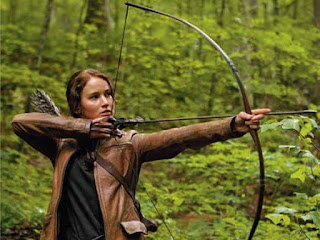There are
times when I feel like this fluffy guy from Alice in Wonderland, always running
late. At least I manage to wear pants (most days) but I think the White Rabbit
and I fret just as much.
So I
wanted to remind myself of the best ways to take control of time, rather than
running around chasing your own tail (no matter how cute or fluffy it may be):
The Pomodoro Technique
Introduced to me by a dear writing friend, it’s actually got a cult
following around the world. The idea is that you identify what you want to do,
then break it down into 25 minute sections. Then you set the timer to 25
minutes and start, not working on anything else at all until the timer goes off.
Then you take a break, walk around for a bit (maybe 15 mins) then settle back
in and do another ‘pomodoro’. If something crosses your mind while working on
the project, you put a mark on your notepad, like a notch. In practice I have
found that when I start off doing one pomodoro session, I end up doing another
because I really start getting into a project that I had previously been
thinking a lot about but not actually doing. It’s important to take breaks,
which can be hard if you’re finally slaying that demon of a task. But the first
cut is the deepest and that demon will still be there when you get back, just a
little weakened after you had your first go at it. It’s called the Pomodoro
technique because the original timer used was in the shape of a tomato. The
technique has a global following (and range of merchandise).
Eat that Frog
This means ‘choose the biggest, ugliest task you need to tackle and do
it before you do any other task’. This is a concept from Brian Tracy who is a
best selling author of anti-procrastination books. He says “If the first thing you do when
you wake up in the morning is eat a live frog, then nothing worse can happen
for the rest of the day!" Truly this, for me, should be exercising as it’s
the easiest thing that gets shunted along by just about anything else, but it
also delivers the most benefit. As the ugliest frogs do . . .
‘You don’t have to go to every
fight you’re invited to'
I saw this on Pinterest (do you think I can find the
pin??) and it’s something I think about when I’m working to a deadline and
someone tries to involve me in something that I really don’t need to be
involved in – whether it’s a fight, or even something really nice that I would
love to do, but that I would actually prefer to do, other than eating that
frog. We all get annoyed by things sometimes, but it can be a real time-saver
(and energy-saver) to tell myself that I’m not going to buy into it and to ask whether it really matters in the bigger picture. Doesn’t
always work but when it does, it feels really good.
Remain single-minded
Why is it, when I’m short on time and there is one thing that I really
need to do, a little voice inside says ‘Ooh, I wonder what’s happening on
Twitter/Facebook/email/Pinterest’ and before you know it I’ve lost an hour,
made 3 new pinboards, laughed at people’s posts, retweeted a bunch of stuff and
then end up like the white rabbit fretting over the nasty frog dragging on my
heels. But when I do stay single-minded, when I shut down the apps, ignore
emails, tell people when I’ll get back to them and do not move until I have finished
the task (or at least a couple of pomodoros) I feel so much better – like I’ve
prized the clammy fingers of the frog and left him back in the middle of the
path in a pile of frog slime. Also – the only thing worse than eating a whole
frog is eating half a frog. Twice.
Turn back time
Cher wished for it, but one way to actually do it is to set your watch
back by 15 mins. I’m working on this one, but I started today and I spent the
morning enjoying getting ready for work, having breakfast and walking to the
bus stop instead of running around and racing to the bus stop.
I’m no expert – there’s an entire industry of people who present and
write techniques for getting better control of time.
But it’s helpful to remind myself of these from time to time, so I’m a
little less Wonderland Rabbit, a little more Rabbit in a Hat.


































